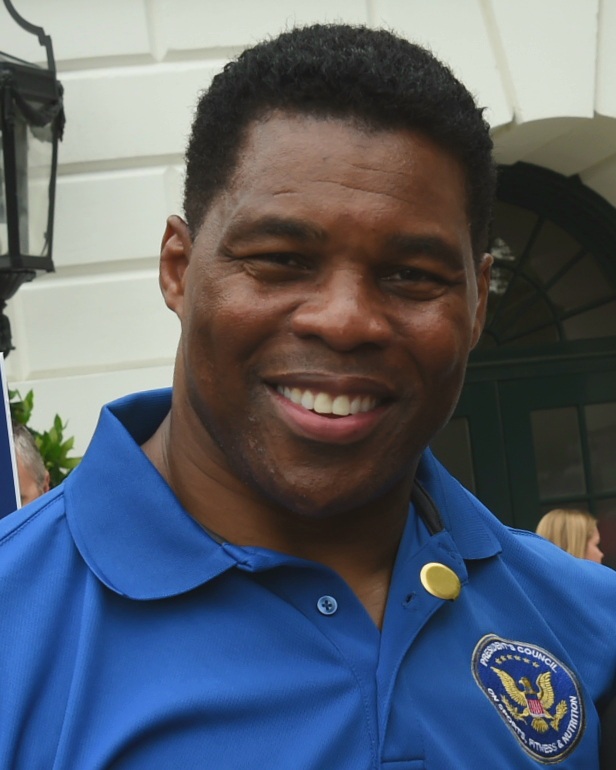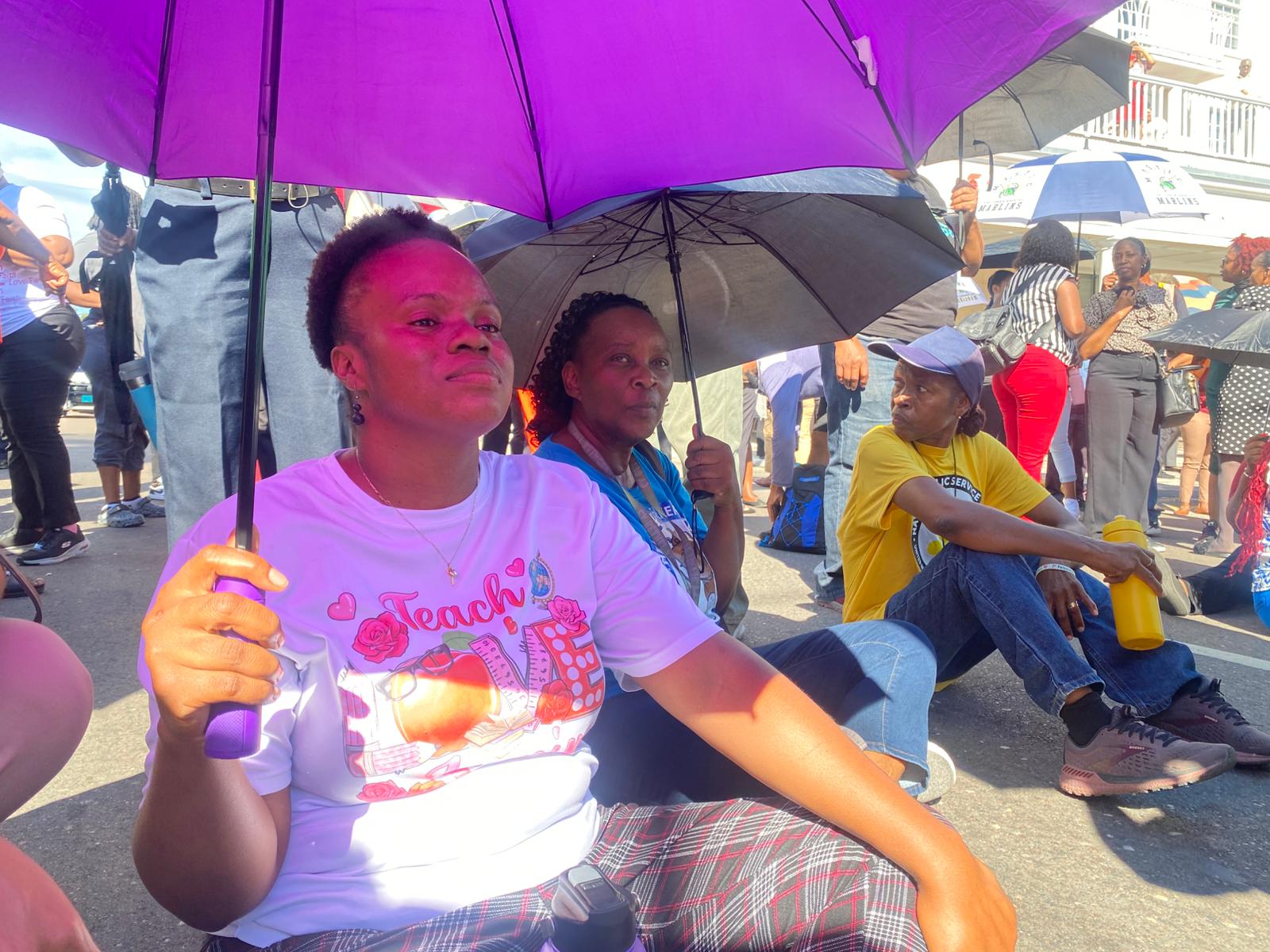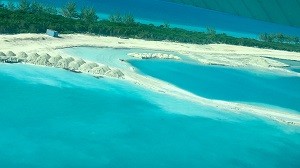 #Bahamas, November 17, 2017 – South Cat Cay – A small plane circled slowly, flying over the blue-green waters of the northern Bahamas. It should have been a day of sightseeing, photographing an island under carefully managed development with its fragile marine resources protected as the gems that will lure those who will eventually visit, live there or leave their yachts.
#Bahamas, November 17, 2017 – South Cat Cay – A small plane circled slowly, flying over the blue-green waters of the northern Bahamas. It should have been a day of sightseeing, photographing an island under carefully managed development with its fragile marine resources protected as the gems that will lure those who will eventually visit, live there or leave their yachts.
Instead, what they saw as they flew over South Cat Cay sent chills down their spines and cries of outrage and despair from their hearts. The group in the plane included representatives from Save Our Home, a Bimini-based organisation, Save The Bays and Waterkeepers Bahamas.
Save The Bays Chairman Joe Darville said what he saw convinced him more than ever of the urgency of creating comprehensive environmental protection legislation and placing an environmental watchdog on every project.
“It takes hundreds, sometimes thousands, of years to create coral reefs and minutes with heavy equipment to destroy it,” said Darville. “We are pleading, not asking, pleading with government. When will you listen? When will we begin to take these gifts that God gave us seriously and stop allowing uncaring people to eviscerate them in the name of progress? This is not progress. This is evil.”
The story below is their story, in their words. Save Our Home wrote it at the close of their aerial and land inspection during early November, 2017. Their words have not been edited. The introduction, they said, was gleaned from previously published reports:
In 2009, the Government of the Bahamas under PM (Hubert) Ingraham gave full environmental approval for the 85-acre privately owned South Cat Cay for an exclusive, high end, hospitality and marina project. The project will comprise a 53 room five star branded boutique hotel with related amenities, 29 marina condo units, 37 residential units, a 137 slip marina, restaurants, shops and recreational facilities. This high-end resort will also include an upmarket residential community.
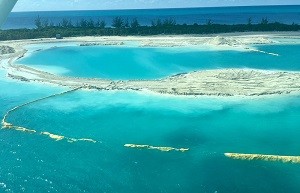 During the course of construction in two phases it is estimated that some 75 Bahamians will be employed, and upon completion and build out some 170 permanent jobs will be created. In addition to the $94 million capital investment by the developers, their economic impact assessment projects over $200 million in real estate sales over the first five years, which will significantly benefit government revenues, suppliers and employment. The developer said the project will bring considerable benefit to Biminites in the form of employment and entrepreneurial opportunities generated by proposed retail space and excursions in the marina village. They said they plan to purchase Bimini built skiffs for bone-fishing excursions led by Bahamian guides. A Bahamian will operate a ferry service to and from Bimini; an artist in residence program will expose Bahamian artists to new techniques; a recording space will dedicate studio time for local musicians and local cooks will be provided with classical training. Additionally, a fund is being established for primary and secondary educational facilities in Bimini to further long-term environmental awareness. It is also proposed that a marine sanctuary will be created to the south east of South Cat Cay to complement the educational initiative.
During the course of construction in two phases it is estimated that some 75 Bahamians will be employed, and upon completion and build out some 170 permanent jobs will be created. In addition to the $94 million capital investment by the developers, their economic impact assessment projects over $200 million in real estate sales over the first five years, which will significantly benefit government revenues, suppliers and employment. The developer said the project will bring considerable benefit to Biminites in the form of employment and entrepreneurial opportunities generated by proposed retail space and excursions in the marina village. They said they plan to purchase Bimini built skiffs for bone-fishing excursions led by Bahamian guides. A Bahamian will operate a ferry service to and from Bimini; an artist in residence program will expose Bahamian artists to new techniques; a recording space will dedicate studio time for local musicians and local cooks will be provided with classical training. Additionally, a fund is being established for primary and secondary educational facilities in Bimini to further long-term environmental awareness. It is also proposed that a marine sanctuary will be created to the south east of South Cat Cay to complement the educational initiative.
But there comes a point when you start to feel like it’s just Deja-vu, that we have heard all this before, been promised jobs for Biminites, been told the highest environmental impact studies are being adhered to, but the reality is, to those of us who live here, it’s all just “hot air” and what they think people want to hear to sell us another story of jobs, progress and investment, but at what expense is the big question?
On Thursday, November 9 the Save Our Home-Bimini Environmental Activist group was invited along with members of the Save The Bays team and Waterkeepers Bahamas to fly over South Cat Cay and witness for ourselves what is really going on. Pictures and videos never lie and there before our very eyes was proof that the development is taking place as we speak, without the relevant silt barriers in place, the kind that actually work and contain the silt that is, properly installed without gaps and without proof of the silt drifting for miles. Memories of the same devastation at the hands of RW (Resorts World) Bimini in 2014 during the dredging of the cruise ship pier spring to mind, with the same ineffectual yellow silt curtains that within two weeks of being installed broke open, covering the ocean in drifting polystyrene and the beaches to this day, covered in yellow plastics. The cruise ship was rendered obsolete in a year. Meanwhile, we lost 12 main dive sites off the west coast of Bimini, smothered in silt, which suffocated the corals and partially buried the stones of Atlantis, sites that divers come from all over the world to see and that locals earn their living from in dive tours. Marine life dwindled to a point that some species are no longer seen in these waters.
In the past couple of weeks, more than one hundred Bahamians have been fired from RW, leaving people wondering if the resort is going bankrupt over rumors that they are losing in excess of $26,000 a day. And whilst the resort here in Bimini conjures images of a sinking ship, long predicted by those of us in the know due to the size of the development being too big for the infrastructure on such a small island, the Government is meanwhile playing out the same story all over again in South Cat Cay.
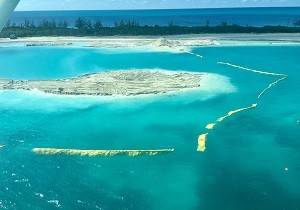 Large populations of turtles used to be seen on the cays around South Cat, just like they did offshore from RW Bimini. Now the water is so muddy with silt, nothing can be seen and in Bimini an annual Power Boat Grand Prix is organized around the very reefs that are home to turtles and sharks.
Large populations of turtles used to be seen on the cays around South Cat, just like they did offshore from RW Bimini. Now the water is so muddy with silt, nothing can be seen and in Bimini an annual Power Boat Grand Prix is organized around the very reefs that are home to turtles and sharks.
Bimini and South Cat Cay has a blessing and curse, a blessing that it is at the top of the Bahamas chain and so brings an abundance of tourism to these shores, but a curse that successive governments seem to cash in on in taxes from such large scale developments, none of which is seen invested back into the local communities. As Fred Smith QC has pointed out, until we have local governance and taxes made on these islands invested back into local community developments, instead of going into the countries capital never to be seen again, the family islands will continue to deteriorate and decline.
One would think, that when heads of agreement come together, that a budget could be put in place with the developers to financially cover the employment of an on-site environmental advisor to monitor the development and provide weekly reports that all is in keeping with plans laid out, providing jobs for Bahamians and protecting our shores. Instead, developers seems to think they have carte blanche to do whatever they like while no one is watching. Accountability seems sadly lacking throughout the Bahamas development. At the end of the day, we are left with our natural resources ransacked and foreign developers pulling out, once the damage is already done. New legislation is needed putting the environment first in order to save one of the most beautiful parts of the world before it’s too late. With the Bahamas being such low lying islands and global warming and sea levels rising, it makes no sense not to put new environmental legislation at the top of the priorities list moving forward.
Release: DPA News
Photo captions:
Header: Sand and silt from dredging and excavating on South Cat Cay can smother coral reefs and kill the life that depends on the marine habitat. Already, say representatives of three organizations that inspected the development site this week, the once plentiful sea turtles in the area are no more.
1st insert: Dredging and infrastructure work is underway at South Cat Cay where a hotel and marina were approved for the 85-acre site under the former FNM government, but environmentalists want to know where is the protection for marine resources?
2nd & 3rd inserts: Inadequate silt barriers allow disturbed sand and silt to float over open waters, smothering coral reefs and suffocating the life that depends upon the habitat, potentially endangering grouper, hogfish and reef species and upsetting the full eco-cycle in a fragile eco-system. The above image was taken from a small plane flying over a development underway at South Cat Cay in the northern Bahamas. Environmentalists from three groups want to know where are those who are supposed to be protecting the marine environment of The Bahamas? They fear the project will mirror the tragedies of nearby Bimini where world-famous dive sites were destroyed by a massive dredger to make way for a cruise ship dock. The cruise ship does not call on Bimini anymore and more than 150 people have been laid off from their jobs at the resort it was intended to serve.
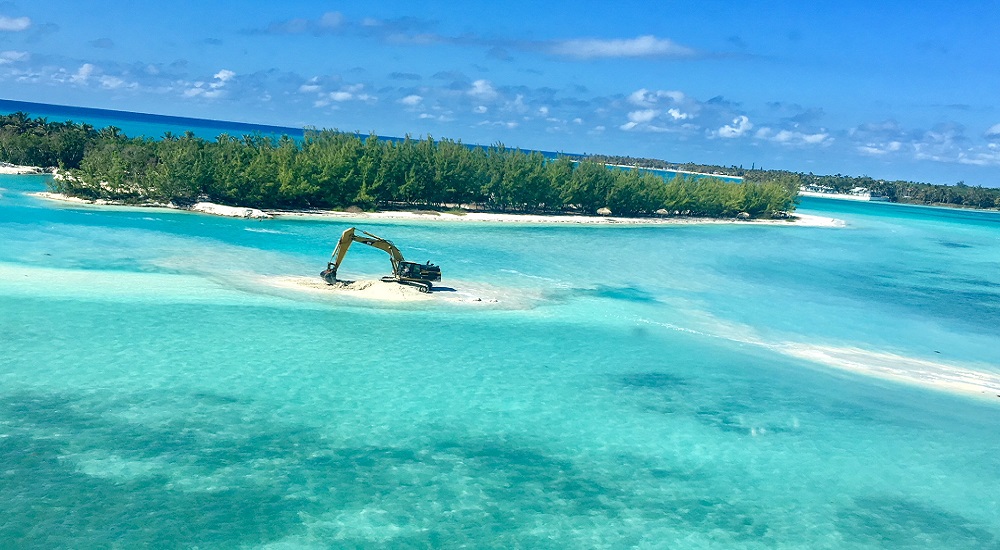
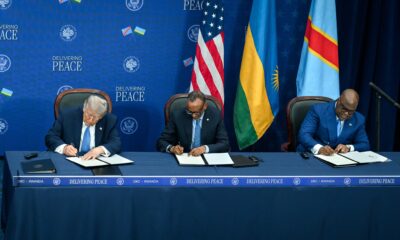
 USA8 hours ago
USA8 hours ago
 Health19 hours ago
Health19 hours ago
 TCI News17 hours ago
TCI News17 hours ago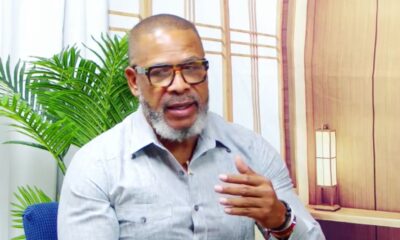
 TCI News18 hours ago
TCI News18 hours ago



